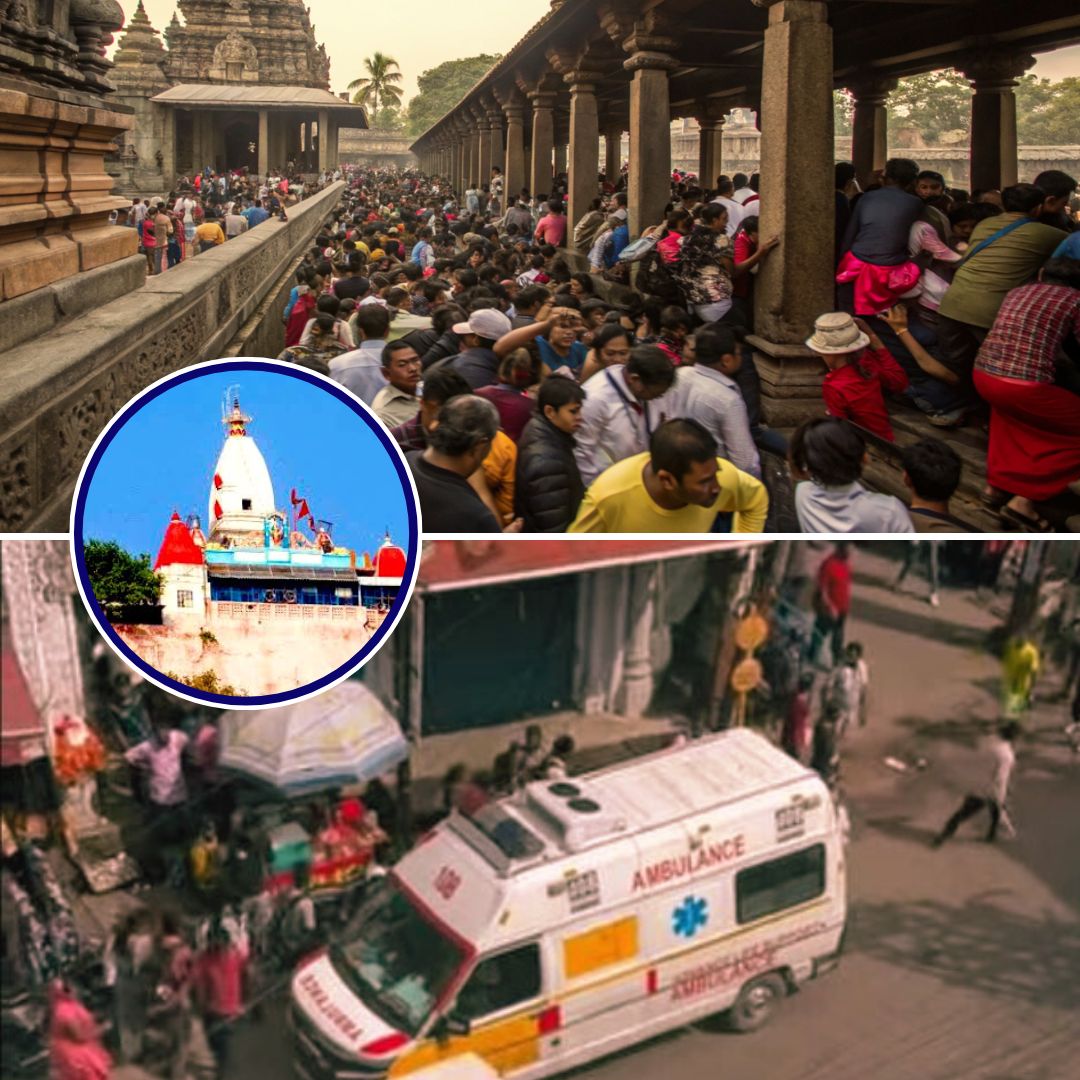A tragic stampede at the Mansa Devi Temple in Haridwar on Sunday morning led to the deaths of eight people and injuries to around 28 others. The incident happened at approximately 9 am during the holy month of Shravan when hundreds of devotees had gathered to offer prayers.
Panic erupted following rumours of an electric shock hazard or a fallen high-voltage cable near the temple’s narrow stone stairway. Police and administrative teams rushed to the scene promptly, launching rescue and relief operations. State authorities have ordered a magisterial inquiry to investigate the source of the false alarm and enhance future crowd safety.
Chief Minister Pushkar Singh Dhami and Prime Minister Narendra Modi have expressed condolences and are closely monitoring the situation.
Panic and Rumours Spark Deadly Stampede
Eyewitnesses and officials alike confirmed that the stampede was triggered by unfounded rumours about an electric shock risk at the temple. Some witnesses claimed that a high-voltage wire had fallen near the stairway, while others heard screams about an electric current on the steps leading to the hilltop shrine.
This sudden alarm struck fear, causing hundreds of devotees—many elderly and children—who were already navigating the narrow, partially obstructed stairway to flee hurriedly. The crowded conditions led to many losing their footing, resulting in people being trampled or crushed in the panicked rush.
One survivor recounted the terrifying moments when she clutched her children, fearing for their lives amid the throng pushing and shoving to get down. Unfortunately, such chaos proved fatal for several, including children. Police Inspector General Nilesh Bharne and Haridwar SSP Pramendra Singh Dobal confirmed that the primary cause of the stampede was the widespread panic initiated by this misinformation. The narrow pathway, less than three metres wide and crowded with makeshift shops and devotees, became a dangerous bottleneck from which many could not escape swiftly.
Context of the Temple and Emergency Response
The Mansa Devi Temple, located atop the Bilwa Parvat at a height of over 500 feet in Haridwar, is an iconic pilgrimage site, especially bustling during Shravan—the sacred month when devotees throng to seek blessings. The temple’s infrastructure, with its steep stone stairways and limited space, faces considerable pressure from large crowds visiting daily.
Officials conducted thorough inspections after the incident and found no evidence of an electric current or any fallen cables, indicating the rumours were baseless and possibly started by someone to cause disruption—though the motive remains unclear. Rescue efforts were initiated immediately, involving the State Disaster Response Force (SDRF), local police, and medical teams, who shifted dozens of injured pilgrims to nearby hospitals for treatment.
Uttarakhand Chief Minister Pushkar Singh Dhami expressed his deep grief over the tragedy and assured continuous efforts to provide medical support and psychological counselling to victims and families. Additionally, Uttar Pradesh Chief Minister Yogi Adityanath extended his condolences, noting that four of the deceased hailed from Uttar Pradesh. The government has decided to initiate a magisterial inquiry to identify those responsible for spreading panic and to recommend necessary improvements in crowd control and temple safety.
The Logical Indian’s Perspective
This dreadful incident at Mansa Devi Temple sadly illustrates how misinformation and inadequate crowd management can have devastating consequences, turning a place of faith into a scene of chaos and loss. Pilgrimage is a deeply personal and communal act of devotion, bringing millions together to seek spiritual solace. However, it is imperative that the safety and dignity of devotees are never compromised in the process.
The Logical Indian believes that authorities must sharpen their focus on proactive crowd management strategies, including better infrastructure, clear communication channels, and rapid response systems to prevent rumours from escalating into panic. Furthermore, communities and religious institutions should engage in awareness programmes that educate visitors on safety protocols and emergency responses.
Faith, empathy, and harmony are cornerstones of any society. As we mourn the loss of lives and pray for the injured, we also urge readers, administrators, and civil society to collaborate in crafting safer, more compassionate religious experiences. Public gatherings, especially at revered sites, can be occasions for joy and peace if managed with care and responsibility.
प्रदेश सरकार मनसा देवी मंदिर मार्ग पर हुए हृदय विदारक हादसे के घायलों और मृतकों के परिजनों के साथ खड़ी है। हादसे की मजिस्ट्रियल जांच के निर्देश दे दिए गए हैं। pic.twitter.com/lejkYfQg2x
— Pushkar Singh Dhami (@pushkardhami) July 27, 2025










